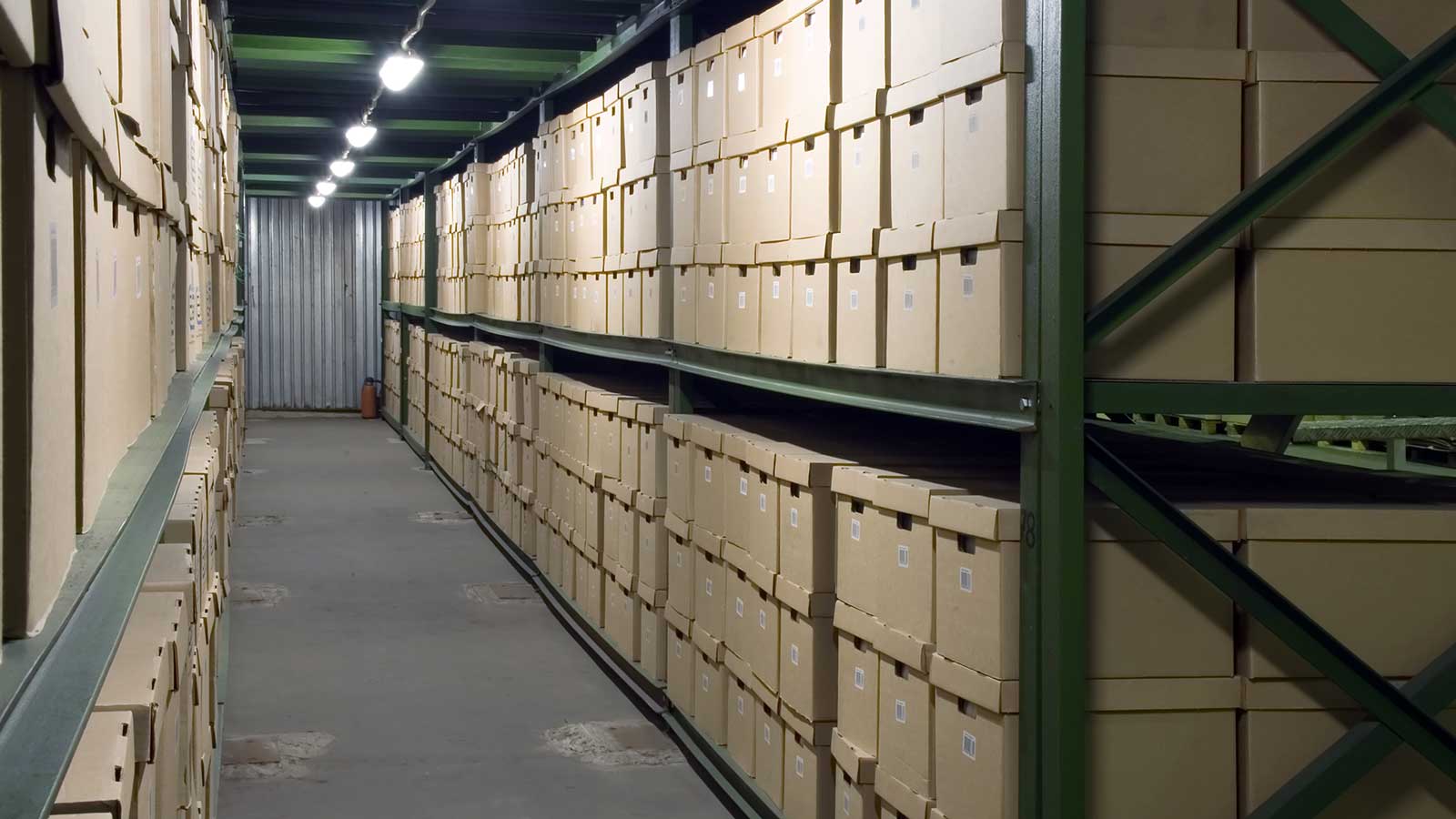Enhancing Access to Information with Digital Mailroom Services
Table of contents
Efficient information management is crucial for architectural firms and construction companies. The ability to swiftly access necessary documents can significantly impact project timelines, compliance, and overall business efficiency. One key component in achieving this is the implementation of digital mailroom services. These services not only streamline mailroom processes but also enhance access to information, making it more manageable and easily accessible for various business needs.
Understanding Access to Information
Access to information in a business context refers to the ability of employees, stakeholders, and regulatory bodies to retrieve necessary documents and data efficiently. For architectural firms and construction companies, this access is critical for project management, compliance, and responding to information requests.
The Importance of Access to Information Laws
Access to information laws, such as the Freedom of Information Act (FOIA), play a vital role in ensuring transparency and accountability within these industries. These laws mandate that certain records be made available to the public, enabling better oversight and informed decision-making. Compliance with these laws is essential, as failure to provide the requested records can lead to legal repercussions and a loss of public trust.
Making Information Easily Accessible
For architectural firms and construction companies, having easily accessible information is not just about compliance. It also aids in efficient project management. Teams need quick access to blueprints, permits, contracts, and other critical documents to keep projects on track and within budget. When information requests arise, the ability to request access to these documents promptly can mean the difference between a smooth project flow and costly delays.
The Role of Digital Mailroom Services
Digital mailroom services revolutionize the way businesses handle incoming mail and physical documents. By converting paper documents into digital formats, these services streamline mailroom processes and significantly reduce operating costs.
Key Components of Digital Mailroom Services
At their core, digital mailroom services involve the digitization of all incoming mail. This includes scanning physical mail, applying optical character recognition (OCR) for text extraction, and routing the digitized documents to the appropriate departments or individuals. This process ensures that all documents are stored in a searchable, easily accessible format, facilitating quick retrieval and management.
Streamlining Mailroom Processes
Traditional mailrooms can be labor-intensive and prone to errors. Digital mailroom solutions automate many of these tasks, reducing the risk of misplaced or lost documents. This automation enhances the efficiency of mailroom processes, allowing employees to focus on more strategic tasks rather than manual sorting and distribution of mail.
Handling Incoming and Physical Mail
Digital mailroom services efficiently manage incoming mail by digitizing it upon arrival. This immediate conversion to digital format ensures that all documents are promptly accessible, regardless of the recipient's location. By transforming physical mail into digital assets, businesses can improve their workflow, reduce the need for physical storage, and enhance overall information management.
Benefits of Digital Mailroom Solutions for Architectural Firms and Construction Companies
Digital mailroom services offer numerous advantages for architectural firms and construction companies. These benefits span from improved document accessibility to enhanced compliance and operational efficiency.
Facilitating Information Requests and Disclosure
Digital mailroom solutions streamline the process of handling information requests and the disclosure of information. By digitizing documents, firms can quickly request access to the necessary records, ensuring that the right information is available at the right time. This capability is especially important for responding to regulatory inquiries and client requests.
Efficient Access to Requested Records
One of the primary advantages of digital mailroom services is the ability to access requested records efficiently. This capability supports better decision-making and project management, as teams can quickly retrieve documents related to ongoing projects, permits, and contracts. It also helps in maintaining compliance with access to information laws and regulations.
Enhancing Business Processes and Workflow
By digitizing paper documents, digital mailroom solutions significantly enhance business processes. Digitized documents are easier to store, search, and share, improving collaboration and workflow efficiency. This transition reduces the reliance on physical storage, minimizes the risk of document loss, and facilitates a more organized information management system.
Compliance and Legal Considerations
Compliance with access to information laws and the Freedom of Information Act (FOIA) is critical for architectural firms and construction companies. Digital mailroom services support these compliance requirements by ensuring that documents are accurately digitized, stored securely, and easily accessible for regulatory review.
Supporting Compliance and Law Enforcement
Digital mailroom services play a crucial role in helping businesses comply with legal standards and support law enforcement requirements. By maintaining an accurate and accessible digital archive, firms can provide timely and accurate responses to regulatory audits and investigations, reducing the risk of non-compliance penalties.
Case Studies/Examples
To better illustrate the benefits of digital mailroom services, let's explore some examples of how architectural firms and construction companies have successfully implemented these solutions.
Example 1: Architectural Firm Streamlines Information Management
An architectural firm struggling with managing physical mail and paper documents decided to implement a digital mailroom solution. By digitizing incoming mail and project documents, the firm was able to:
- Reduce operating costs associated with physical storage.
- Improve access to records, ensuring that project teams could quickly retrieve necessary documents.
- Enhance compliance with access to information laws by maintaining a searchable digital archive.
As a result, the firm experienced improved workflow efficiency and better project management.
Example 2: Construction Company Enhances Compliance and Efficiency
A construction company faced challenges with information requests and maintaining compliance with the Freedom of Information Act (FOIA). By adopting digital mailroom services, the company:
- Streamlined mailroom processes, reducing the time spent on manual sorting and distribution.
- Improved the ability to request access to requested records, ensuring timely responses to regulatory inquiries.
- Enhanced overall business processes by digitizing paper documents and making them easily accessible.
This transition led to significant cost savings and improved compliance, allowing the company to focus more on its core operations.
Implementing Digital Mailroom Services
Transitioning to a digital mailroom solution requires careful planning and execution. Here’s a step-by-step guide to help architectural firms and construction companies implement these services successfully.
Step 1: Assess Your Current Mailroom Processes
Begin by evaluating your existing mailroom processes. Identify pain points, such as delays in mail distribution, high operating costs, and challenges in accessing physical mail. This assessment will help you understand the specific areas that need improvement and how digital solutions can address them.
Step 2: Choose the Right Technology
Select the appropriate technology for digitizing your mailroom. This includes high-speed scanners, OCR software for text recognition, and secure digital storage solutions. Ensure that the chosen technology can handle the volume of incoming mail and paper documents your firm processes daily.
Step 3: Partner with a Reputable Service Provider
Partnering with a reputable digital mailroom service provider is crucial. Look for a provider with experience in handling document scanning and digitization for your industry. They should offer comprehensive services, including secure data handling, indexing, and integration with your existing systems.
Step 4: Train Your Staff
Provide thorough training for your staff on the new digital mailroom processes. This training should cover how to handle and digitize incoming mail, use the scanning and OCR technology, and access the digital archive. Proper training ensures a smooth transition and maximizes the benefits of the new system.
Step 5: Implement and Monitor
Roll out the digital mailroom solution in phases to ensure a smooth implementation. Start with a pilot program to identify any issues and make necessary adjustments. Monitor the performance of the new system, focusing on improvements in business processes, cost savings, and compliance with access to information laws.
Conclusion
Efficient information management is critical for architectural firms and construction companies. Digital mailroom services play a pivotal role in enhancing access to information, streamlining mailroom processes, and ensuring compliance with regulatory requirements. By implementing a digital mailroom solution, businesses can reduce operating costs, improve workflow efficiency, and maintain better control over their requested records.
For more information on how digital mailroom services can benefit your firm, visit DocCapture's website and explore our comprehensive document scanning and digital mailroom solutions. Fill out our "get a quote" form to receive a customized solution tailored to your needs.
Share this
You May Also Like
These Related Stories

Back File Scanning: What You Need to Know

Transforming Traditional Mailrooms with Digital Solutions

